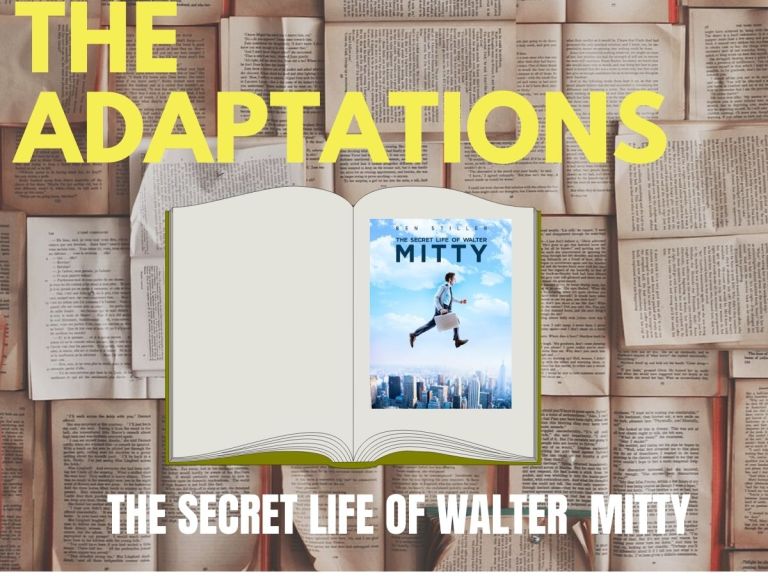Welcome to “The Adaptations.” In this column, I will review film adaptations of books, short stories, poems, songs, etc. Join me in the exploration of these fascinating films and their origin stories.
I first encountered James Thurber’s well-known short story “The Secret Life of Walter Mitty” in an English class during my sophomore year at Stanford. Given the creative writing program’s devotion to the art of the short story, it was only a matter of time before I encountered Thurber’s interesting character Walter Mitty.
“The Secret Life of Walter Mitty” gives a brief glimpse into the imaginative mind of the titular protagonist, who is often transported out of his ordinary life and into fantastical daydreamed scenarios. Set in the suburbs of New York City, the story begins and ends in the time that his wife, Mrs. Mitty, goes on errands and attends her hair appointment. Within this period, Walter Mitty fantasizes that he is a war pilot, a doctor, a sharp shooter and a captain.
The antagonist in the short story seems to be Walter’s wife. Mrs. Mitty is very picky and harsh on Walter and criticizes everything from driving too fast to having trouble remembering things. She insists that he wear gloves and and overshoes constantly, and she acts paranoid in the sheltering of her husband. She offers the reasoning that he is “not a young man any longer.”
Metaphorically speaking, Mrs. Mitty represents how the larger society overlooks Walter. Mrs. Mitty shows annoyance and expresses doubt in Walter’s ability to operate as an individual in the world. As a result, she is too overprotective of him. However, although he is not happy in his present life, he does not give up his pride and remains strong.
In the 2013 movie adaptation, Ben Stiller both directs and acts as Walter Mitty. Stiller’s adaptation is sufficient in meaning, yet largely fails in its interpretation of the true short story.
In Stiller’s version of the character, Walter works at Life Magazine as a photographic developer. His life is depicted as ordinary and mundane, but he often zones out and dreams of achieving daring acts, such as saving his romantic interest’s dog. Walter struggles to romantically connect with the woman, Cherly, as he deals with childhood traumas and his father’s early death. As a character, he has yet to realize his own potential.
Walter then gets sent on a mission by Life Magazine to retrieve a photograph negative from famous photographer Sean O’Connell (played by Sean Penn). This photo negative — dubbed “negative 25” — is of great importance because it is being used in the last edition of Life Magazine. O’Connell also refers to it as “the quintessence of life.” In his search for negative 25, Walter ends up going on a wild adventure and experiencing a version of the fantastic life he always desired.
One moment I did really like was the scene in which Walter is longboarding in his real-life adventure down a hill in Iceland. Not only did Stiller actually longboard in Iceland for the scene, but the beautiful moment of Walter returning to his childhood passion of skateboarding is very heartwarming.
Still, many things in Stiller’s version do not work with the original story. The movie often relies too heavily on shallow and obvious metaphors, such as Walter working at Life Magazine while leading a mundane life. As a viewer, I often felt as though the movie was too invested in the overdone action scenes instead of the root of the short story. It also preaches the cliche message that one should live in the present moment. This is shown in moments such as Life Magazine closing and instead turning into the publication “Life Online.”
The movie successfully communicates the literal and metaphorical danger in constant escapism. However, the whole cinematic production misses several original concepts from the short story, sacrifices meaning for comedy and adds lame movie references.
Instead of approaching this film with sensitivity and understanding of Thurber’s original concept, Stiller’s iteration comes across more like superficial sketch comedy in its situational irony and comedic actors. Adam Scott and Kristen Wigg play both funny parts, but the characters do not play to the actors’ strengths. The story itself is more serious and is ill-suited for the humor that Stiller jams into the story.
That said, the ending of Ben Stiller’s adaptation, when Walter finds the famous photographer, saves the entire film. O’Connell is photographing a snow leopard but ends up not taking the photo. When Walter asks him why he didn’t take the shot, O’Connell offers the explanation that “beautiful things don’t ask for attention.” Negative 25 — “the quintessence of life” — ends up being a photograph of Walter Mitty at work, drawing parallels between him and the rare snow leopard.
The film adaptation of “The Secret Life of Walter Mitty” thus leaves its viewer thinking about the beauty hidden in the ordinary, ultimately representing the real adventure of life.
Editor’s Note: This article is a review and includes subjective thoughts, opinions and critiques.
